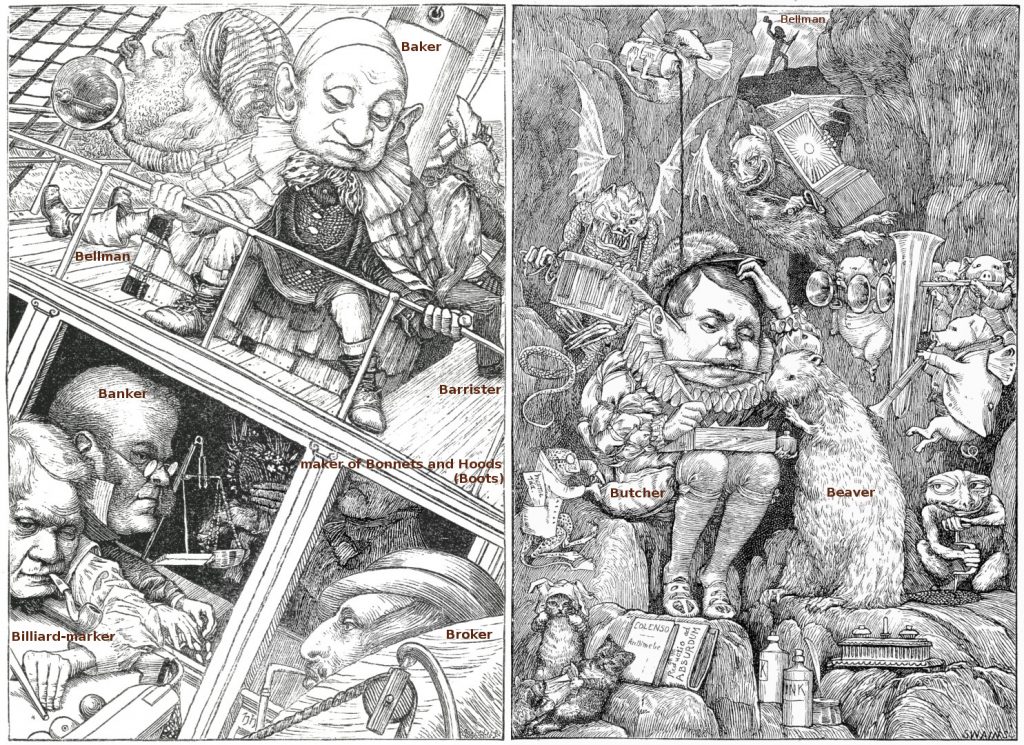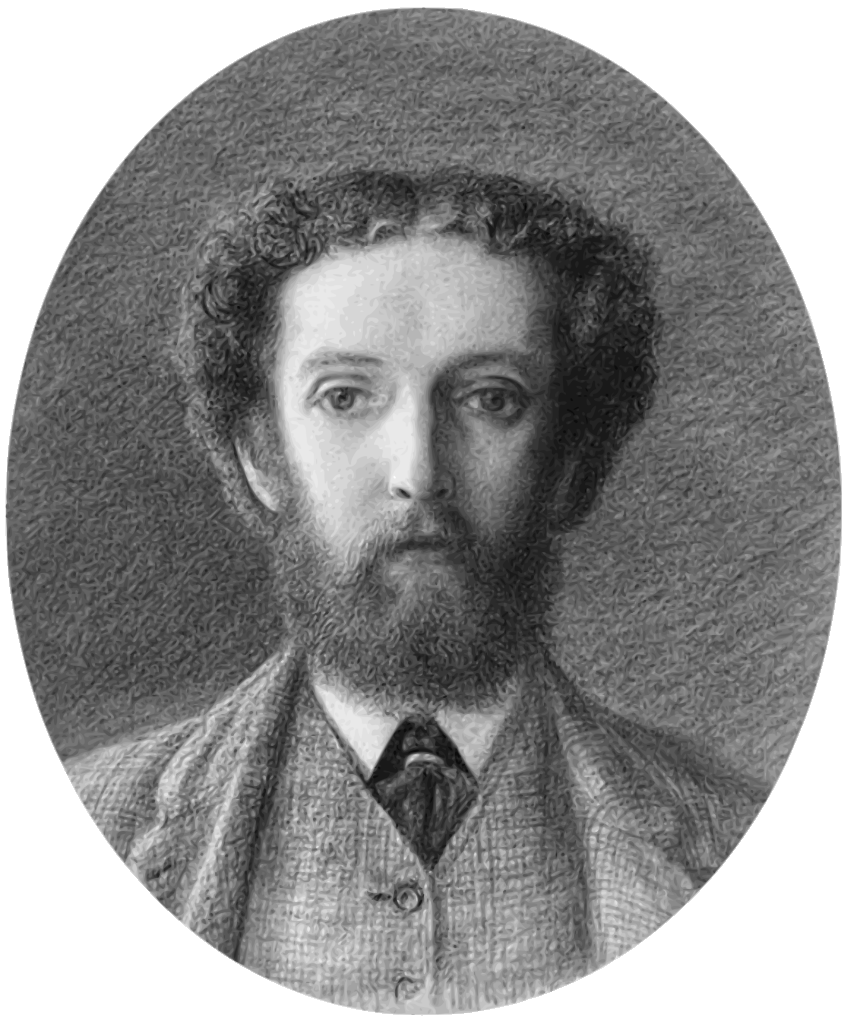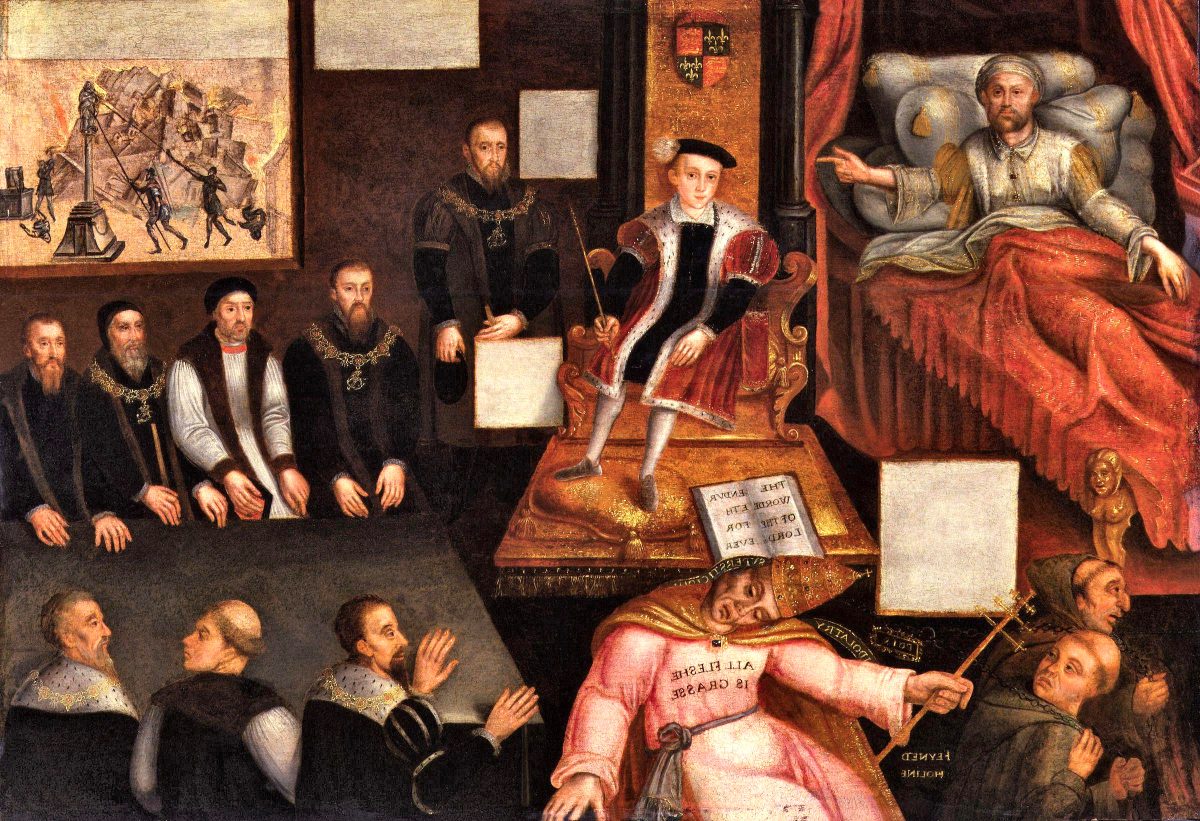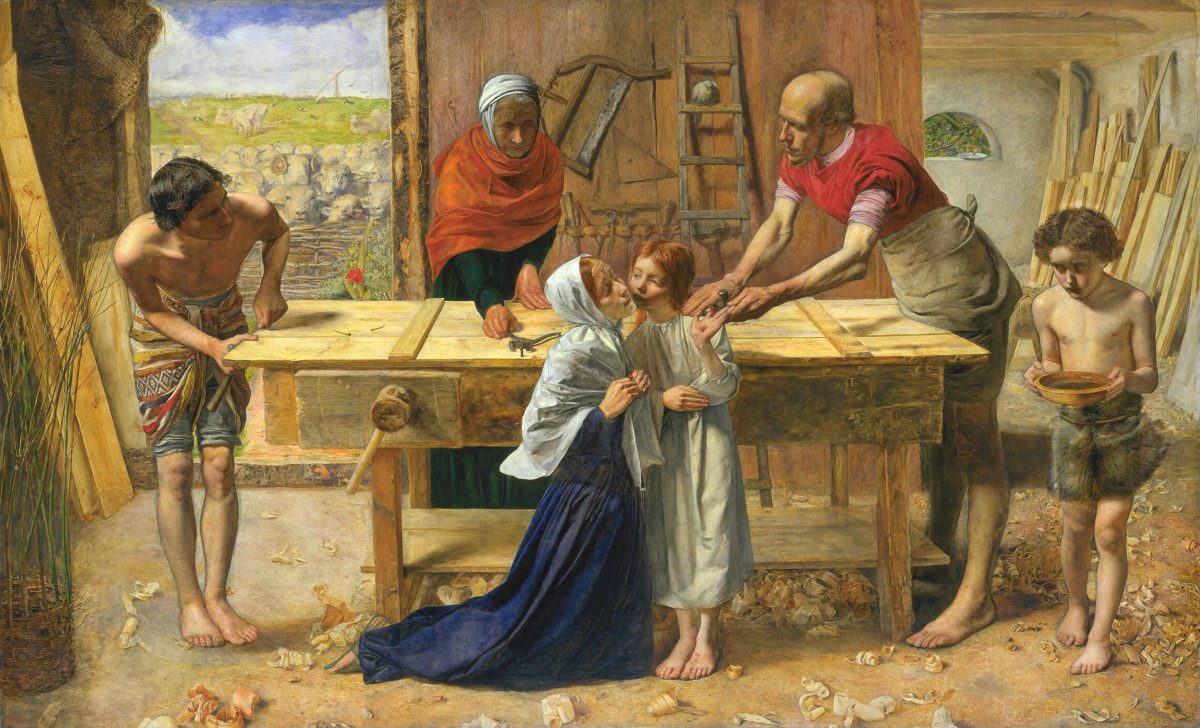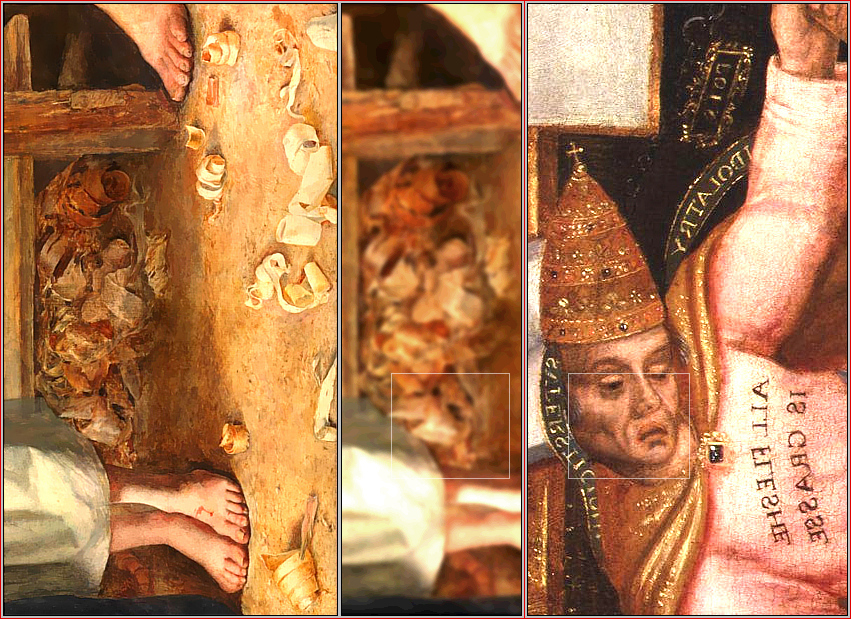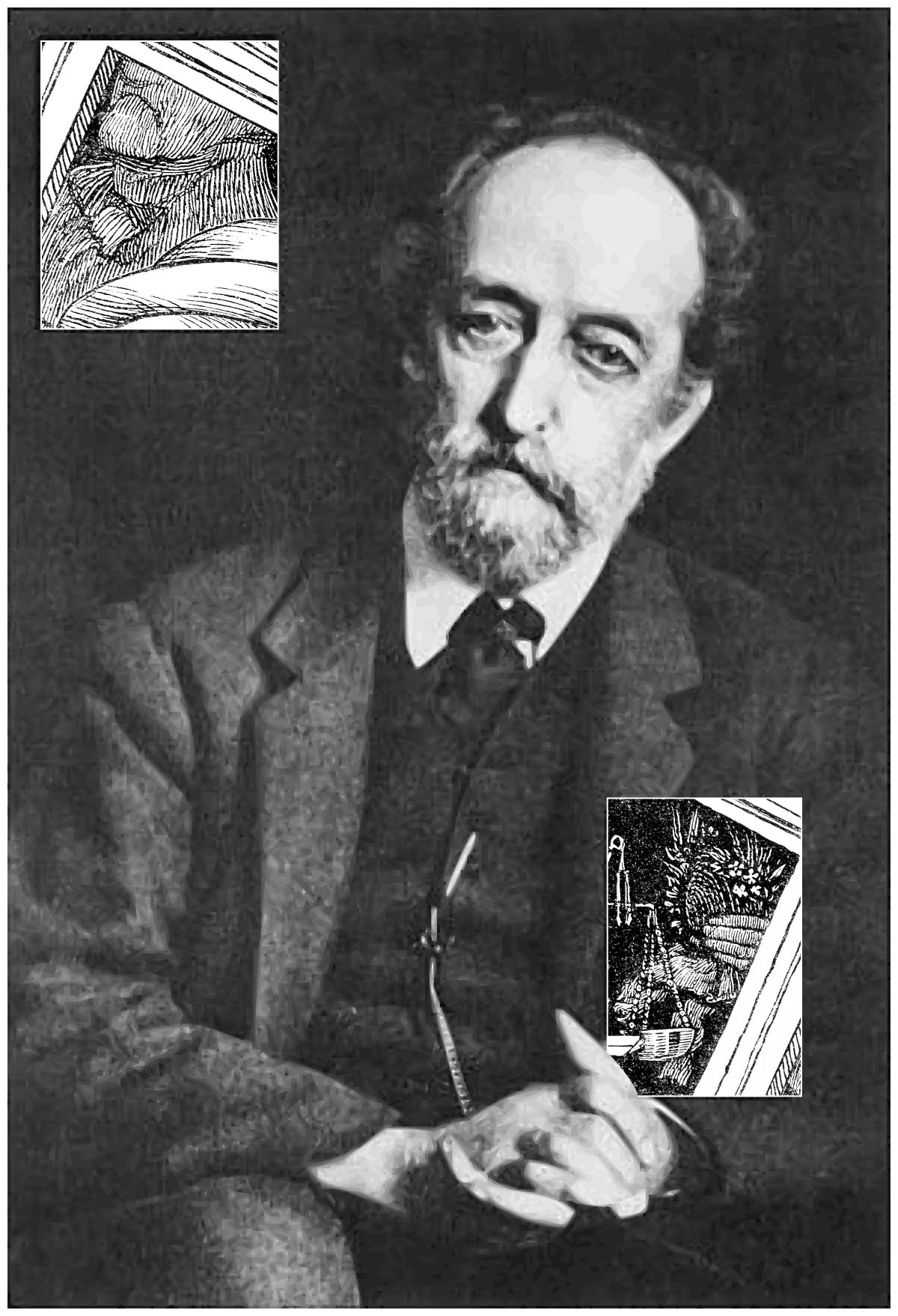
Watch those fingers: The photo has been “photoshopped” (by Henry Holiday or Joseph Swain?) already many years before I worked on it using GIMP. Holiday’s tinkering with the little finger and the thumb of his left hand might be a “Victorian craze“.
The image shows Henry Holiday and segments of one of Henry Holiday’s illustrations (cut by Joseph Swain) to Lewis Carroll’s The Hunting of the Snark. The segments show the Bonnetmaker and a bonnet.
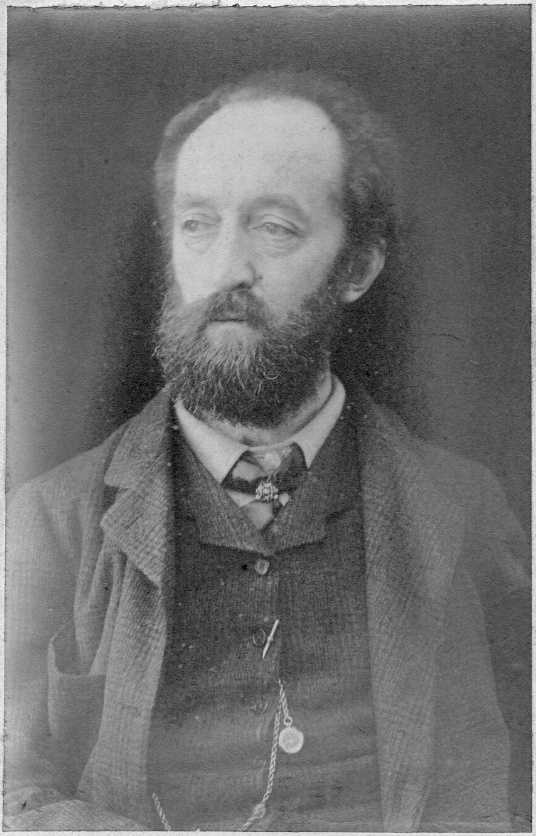 The Bonnetmaker drawing could be a little self portrait, a cameo of Henry Holiday in The Hunting of the Snark. The photo is a portrait perhaps taken by Joseph Swain or a self portrait. Henry Holiday was in his mid thirties when he illustrated Carroll’s Snark tragicomedy, and the National Portrait Gallery dated a portrait photo of Henry Holiday (NPG x18530) with “1870s”, where the face shown in that photo does not look too different from the face in the assembly shown above.
The Bonnetmaker drawing could be a little self portrait, a cameo of Henry Holiday in The Hunting of the Snark. The photo is a portrait perhaps taken by Joseph Swain or a self portrait. Henry Holiday was in his mid thirties when he illustrated Carroll’s Snark tragicomedy, and the National Portrait Gallery dated a portrait photo of Henry Holiday (NPG x18530) with “1870s”, where the face shown in that photo does not look too different from the face in the assembly shown above.
Such little self portraits in drawings have a long tradition.
In German there is the term “Assistenzfigur”. That is a person positoned in the background or beside the main person or main object depicted in a painting. You may think of such a person as the static version of a “film extra” in a movie. She or he serves a a kind of helper or assistant. Sometimes one of these extras is the artist who made the painting. In German we call such an image in the image an “Assistenzselbstbildnis” or “Assistenzselbstbild” or “Selbstbildnis in Assistenz”. Perhaps the first known self-portraits in assistance where a kind of signature of the artist.
The “self-portrait in assistance” first became available since the 14th century to master builders and sculpturer, shortly after that in Italy also to fresco painters, and since the 15th and 16th century also to painters of large altar- and panel paintings; see Raupp, S. 8
Source (in German): Footnote on p. 162 in Suzanne Valadon – Identitätskonstruktion… (2001) by Valeska Doll referring to Untersuchungen zu Künstlerbildnissen und Künstlerdarstellungen in den Niederlanden im 17. Jahrhundert (1984) by Hans-Joachim Raupp.
In that matter there also are references to Raupp in Melanie Munduch: Die Selbstbildnisse Luca Giordanos (2012)
#Assistenzselbstbildnis: ex Twitter
For diskussion of the finger “photoshopping”: ex Twitter
Original post: 2017-09-28. Update: 2023-10-13

